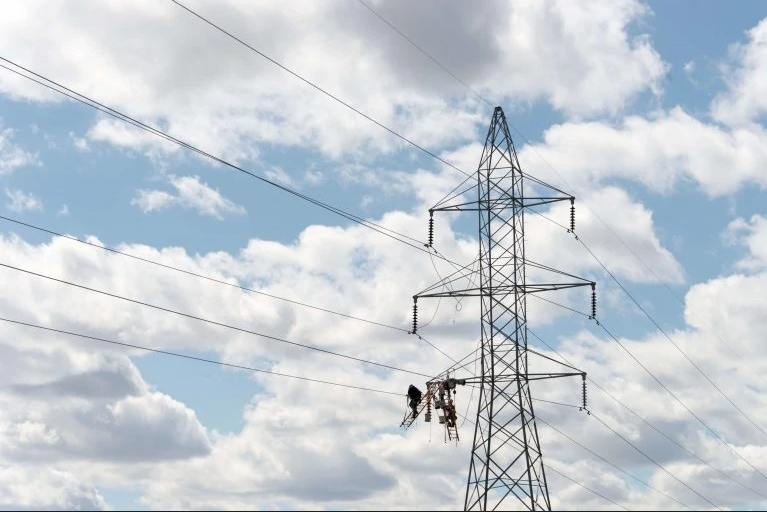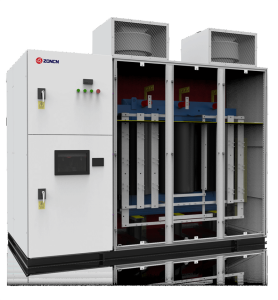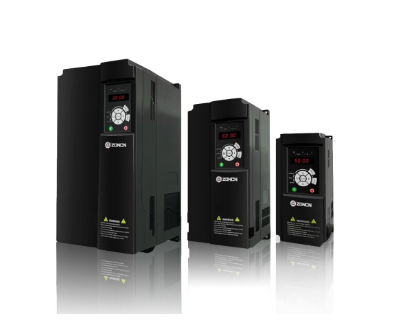
Voltage is the potential difference between two points created by an electric field. If two points with a potential difference (A and B) are connected by a conductor, electrons will flow. The point with a higher potential (A) will release some of its charge through the conductor to the point with a lower potential (B) until the potentials of the two points are equal. In simple terms, voltage is the “force” that pushes charge along a conductor, and its unit is volts (V).
Voltage is usually expressed in units such as kilovolts, which is equivalent to one thousand volts (symbol kV). So, for example, a traditional battery has a voltage of 1.5 volts, while a power line has a voltage of thousands of volts and a lightning bolt has a voltage of millions of volts.
Current is the amount of charge moving in a conductor in a certain direction, for example, when you turn on a light switch, current flows through the wires to the light bulb, making it glow. Current can be caused by electrons moving through a conductor (such as in a metal conductor) or by ions moving through a liquid (such as in an electrolyte). The magnitude and direction of current can be measured with an ammeter.
High Voltage Electricity
High voltage refers to the electrical energy used by power systems or electrical equipment with higher voltages. Generally, high voltage refers to power transmission and distribution systems with voltages higher than 1,000 volts (1 kilovolt, kV).
High voltage lines refer to lines above 36 kilovolts (i.e. 36,000 volts). High voltage lines are divided into two categories: one is high voltage lines above 36 kilovolts and below 66 kilovolts. The other is high voltage lines above 66 kilovolts and below 220 kilovolts.
In order to reduce energy loss during power transmission, power companies usually use high voltage to transmit power over long distances. Some industrial equipment requires high voltage to operate, such as high-power motors and transformers.
High voltage is more dangerous because it has a stronger electric field strength due to its high voltage. Ordinary people may suffer serious injuries or death if they come into contact with high voltage. At work, handling high voltage equipment requires special safety measures and expertise.
Medium Voltage Electricity
Medium voltage electricity refers to the voltage level between low voltage electricity and high voltage electricity. The voltage range of medium voltage electricity may vary depending on the country and standard, but generally, the range of medium voltage electricity is between 1 kilovolt (kV) and tens of kilovolts (kV), and the common range is 1kV to 33kV.
Medium voltage electricity is often used for power transmission in underground and submarine cables because it can effectively transmit electricity over relatively long distances. Medium voltage electricity plays a connecting role in the power system, connecting both the long-distance transmission of high voltage electricity and the end users of low voltage electricity.
Low Voltage Electricity
In daily life, low voltage electricity is the form of electricity we are most exposed to. This is also the voltage used by most electrical appliances. Common household power supply voltages, such as 220 volts (V) in China and 120 volts (V) in the United States.
Low voltage electricity is relatively safe, but it still needs to be handled with care, as improper operation may still cause electric shock and other hazards. Low voltage power systems are widely used in various types of buildings, industrial and commercial facilities, forming the basis of electricity use.
Different levels of voltage (high voltage, medium voltage, low voltage) are suitable for different scenarios of power transmission and distribution. High voltage is used for long-distance transmission to reduce energy loss, medium voltage is used for regional distribution, and low voltage is used for end users and equipment. When we use the right high voltage inverter, we can improve the efficiency of power transmission and use, reduce energy loss, and thus reduce electricity costs.


